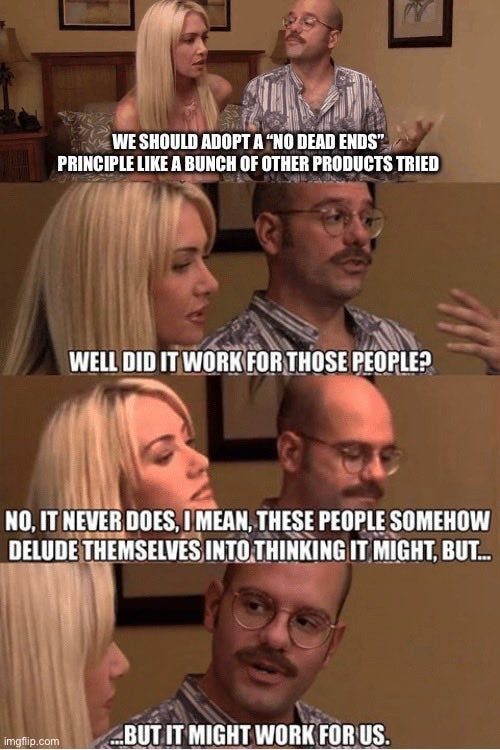No dead ends
“No dead ends” is a commonly stated product/design “principle” for Search and Recommendation products.
Unfortunately, it’s also wrong more often than not.
“No dead ends” is a commonly stated product/design “principle” for Search and Recommendation products. The thought behind it amongst every team is that users should never run out of choice: if we keep giving them some more, including in the form of “pivots” or “guided search suggestions”, users will ultimately be more successful and satisfied.
Unfortunately, for most products, this principle is wrong.
As an example from earlier in my career, I was working on introducing infinite scroll to a search product. Enough past tests had shown that if we increased recall and made it easier for people to see more options, they’d act more often. Some users would find the first thing to take action on, while others would find more to take action on.
A far more experienced Search PM warned me about the test, saying he’d run similar versions several times and they’d all failed. I didn’t believe him and went ahead.
Turns out, he was right. Users did consider more options (I.e. scroll and click on more), but they actually acted on fewer. This is because we effectively put them in a state of decision paralysis: “should I act on this item or scroll and see more?”
The exception to the rule would be passive consumption products - think shortform video feeds - where there is no action to take but to browse. In this world, infinite feeds will lead to greater success.



